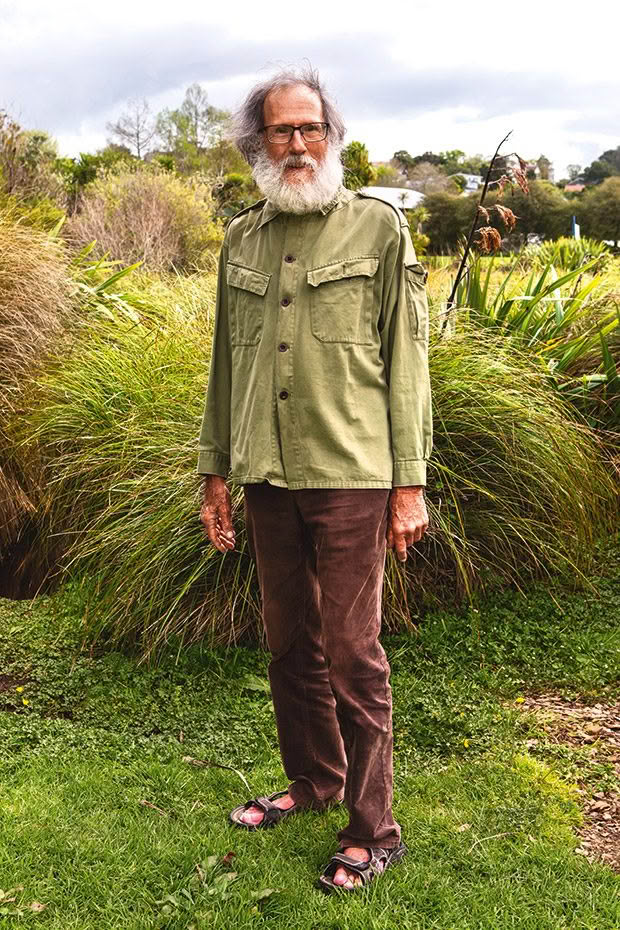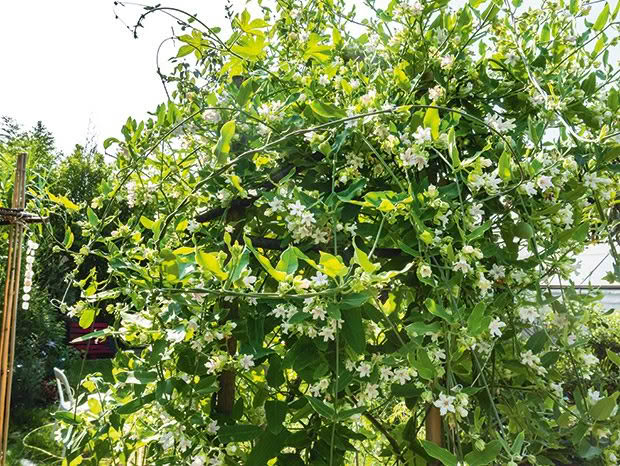This Auckland hero has weeded every day for 30 years — without glory or gain

An after-work weeding habit has grown into a 30-year retaliation against Auckland’s peskiest pests
Words: Chris van Ryn Photos: Rouan Lucas van Ryn
It’s possible to wonder looking at 78-year-old Oliver Hoffmann whether he’s been so long among the weeds that he now has their characteristics.
Oliver spends 1.5 hours a day, seven days a week, weeding throughout Tāmaki Makaurau/Auckland. All year round. The Ellerslie resident is as lean as a paspalum, with a weathered, outdoorsy, vintage leather-brown handbag appearance. His hair and beard of dishevelled grey resemble a dandelion, dismantled by a catch of wind and on the cusp of drifting away.
“Like a weed, weeding has insidiously taken over my life. It’s an addiction,” he says.
“I got into weeding in the mid-1990s. I went with Forest & Bird to Mutukaroa [Hamlins Hill] and spent the day planting trees. A few months later, I decided to see how the trees were doing. And I noticed they were covered in kikuyu.”
On that first visit, Oliver began pulling kikuyu, releasing the trees “so they would have a better chance of surviving”.
After that day, the visits to Mutukaroa became more frequent and slipped imperceptibly into a daily habit. “On my way home from work [in IT], I’d get off the motorway at Sylvia Park, go to Mutukaroa and pull weeds, then grab a takeaway from my favourite Malaysian.”
Thirty years later, Oliver is still weeding. “After Mutukaroa, I heard about these invasive weeds. And I started noticing them everywhere,” Oliver says.
“I have great peripheral weed vision. I’ll be driving and spotting moth plants and woolly nightshade across Tāmaki Makaurau.”

There are weeds on fences, footpaths, telephone poles and hedges. And Oliver will pull his car over and, well, just like that, start weeding. Sometimes he’ll notice weeds in people’s gardens. “I’ll knock on the door and ask if I can remove them.”
The reception is varied. Some are grateful; some don’t care. Very occasionally, some are angry. “When that happens, I leave a council leaflet about invasive weeds in their letterbox.”
At the end of each day, he’ll end up with two or three bags of moth plant pods. The pods need to be taken to the landfill, so he’ll call the council and ask for them to be collected. “They know me,” he chuckles. “But this year, they said they had no budget to collect the pods.”
In the past 10 years, Oliver has visited and weeded in 2100 locations throughout Tāmaki Makaurau. He knows this because he’s kept a spreadsheet of everywhere he’s been. “I’ve been as far as Karaka.”
“These days, my No.1 priority is the moth plant. The roots are easy to pull out, and the pods are easy to pick. Ninety-five per cent of my time is spent on the moth plant. Four per cent is woolly nightshade, and one per cent is random weeds.”
Oliver’s weeding is a solo activity. He weeds — while no one’s watching. No one says, “Well done.” No money changes hands. No one even knows that he’s out weeding.
Oliver doesn’t think about why he weeds. He’s never really examined it. “My parents were quite restricted in their outings. We rarely went on outdoorsy activities. When we did, we always went to the same place. I don’t know where my weeding springs from — I just do it.”
OLIVER’S WEEDS TO BUST
Moth plant is a rampant, evergreen vine with a smelly, milky sap and twining flexible stems. The pods must go to the landfill and can be disposed of via the weekly council rubbish collection. The group for action against moth plants is the Society Totally Against Moth Plants (STAMP).
Woolly nightshade is a shrub native to South America. Pull out the roots if small. Otherwise, use Cut’n’Paste weed gel and bag and bin all the flowers.
Wild ginger: Try dabbing Cut’n’Paste gel on the roots. Oliver prefers digging out all the roots with a grubber, but then they must be transported to be binned at home — at the very least, cut off the flowerheads.
Madeira vine: All roots must be dug out and binned; all nodules removed (and binned). It takes about five years to ensure all the roots have been found and removed.
Smilax: All roots must be dug out (they come in clumps) and binned.
Love this story? Subscribe now!
 This article first appeared in NZ Life & Leisure Magazine.
This article first appeared in NZ Life & Leisure Magazine.
